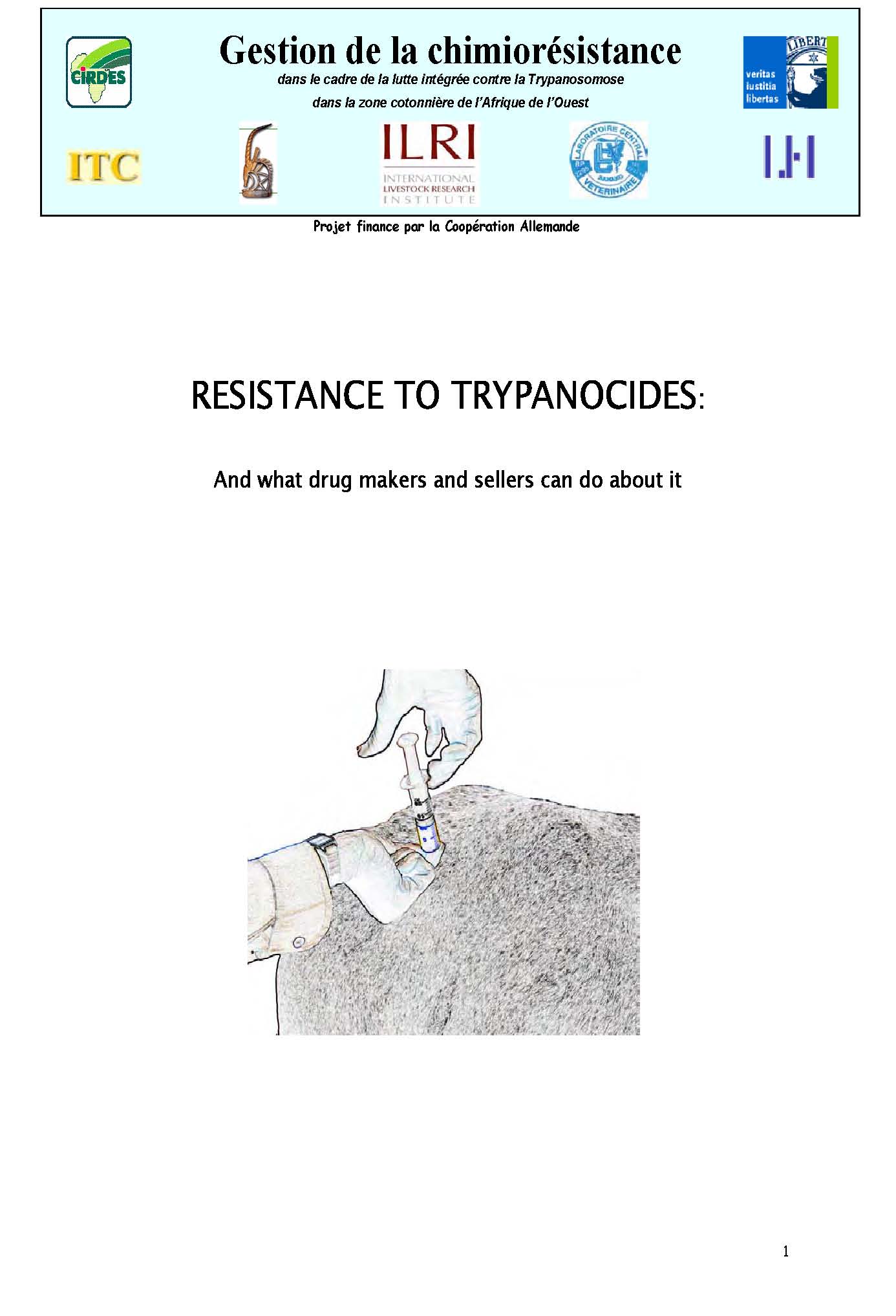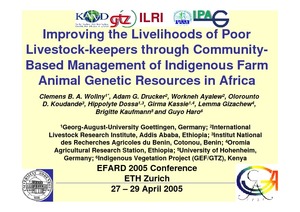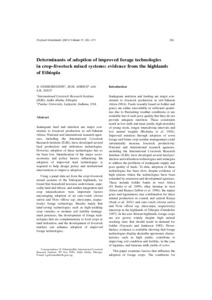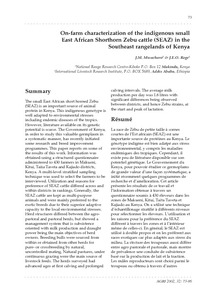Climate variability and impacts on East African livestock herders: The Maasai of Ngorongoro conservation area, Tanzania
East African pastoral adaptation and vulnerability to climate variability and climate change is assessed, using data from decision making processes and ecological data of the Maasai of Ngorongoro Conservation Area as an example. The paper uses integrated modeling, linking PHEWS, a household model, to SAVANNA, an ecosystem model to look at the effects of drought and a series of wet years on the well-being of Maasai pastoralists. Model results suggest that the ecosystem is quite resilient and suggests that the Maasai of the NCA are not very vulnerable to climate variability.
Loss and fragmentation of habitat for pastoral people and wildlife in East Africa: Concepts and issues
Little of the current focus on landscape fragmentation has focused on rangelands or pastoral lands. This paper investigates the existing evidence for causes and processes of fragmentation in pastoral lands and its effects of landscapes and peoples. More conceptual work is needed on the definition of loss and fragmentation, particularly efforts to clarify fragmentation from whose (or what's) perspective.
Evaluation of anthelmintic properties of ethnoveterinary plant preparations used as livestock dewormers by pastoralists and small holder farmers in Kenya
Parasitic nematodes, especially
Haemonchus contortus,
are among the most common and
economically important causes of infectious
diseases of sheep and goats owned by
pastoralists and small holder farm
ers in East Africa. In Kenya, control of these infections
mainly relies on the use of anthelmintic dr
ugs. However, ethnoveteri
nary medicine (EVM)
preparations are widely used by pastoralists
and small holder farmers (SHF) for treatment
of their livestock agains
Is it worth to recuperate degraded pasturelands? An evaluation of profits and costs from the perspective of livestock producers and extension agents in Honduras
The objectives of this study were to: (a) estimate milk and beef yields obtained from cows grazing pastures in different stages of degradation; (b) estimate income losses as a result of the degradation process; (c) estimate the proportion of pasture areas found in each stage of degradation within the six administrative regions of Honduras; and (d) identify different strategies and costs to recuperate degraded pastures. Data came from two surveys executed during a workshop carried out in March 2004.
Determinants of adoption of improved forage technologies in crop-livestock mixed systems: Evidence from the highlands of Ethiopia
Inadequate feed and nutrition are major constraints to livestock production in sub-Saharan Africa. National and international research agencies, including the International Livestock Research Institute (ILRI), have developed several feed production and utilisation technologies. However, adoption of these technologies has so far been low. Identification of the major socio-economic and policy factors influencing the adoption of improved feed technologies is required to help design policy and institutional interventions to improve adoption.
Poverty and Changing Livelihoods of Migrant Maasai Pastoralists in Morogoro and Kilosa Districts, Tanzania
This study documents the plight of the Maasai pastoralists who have moved to Morogoro and Kilosa districts as a result of the recent socio-economic developments and environmental changes in Maasailand. The objective of this study was to analyse how the Maasai migrants have adapted themselves to the new ecological conditions and the impact of such adaptations on their livelihoods.
Patterns of diffusion of an institutional innovation in pastoral areas of Ethiopia. The community based animal health worker and its geographical and social spread in Afar region
Risk factors for sero-prevalence of tick-borne diseases of calves in Maasai pastoral herds in Kajiado District, Kenya
On-farm characterization of the indigenons Small East African Shorthorn Zebu cattle (SEAZ) in the southeast rangelands of Kenya
The use of herders' accounts to map livestock activities across agropastoral landscapes in Semi-Arid Africa
Improved understandings of the agricultural and range ecologies of semi-arid Africa require better information on the spatiotemporal distribution of domestic livestock across agropastoral landscapes. An empirical GIS-based approach was developed for estimating distributions of herded livestock across three agropastoral territories (around 100 km2 each) over a two-year period.






